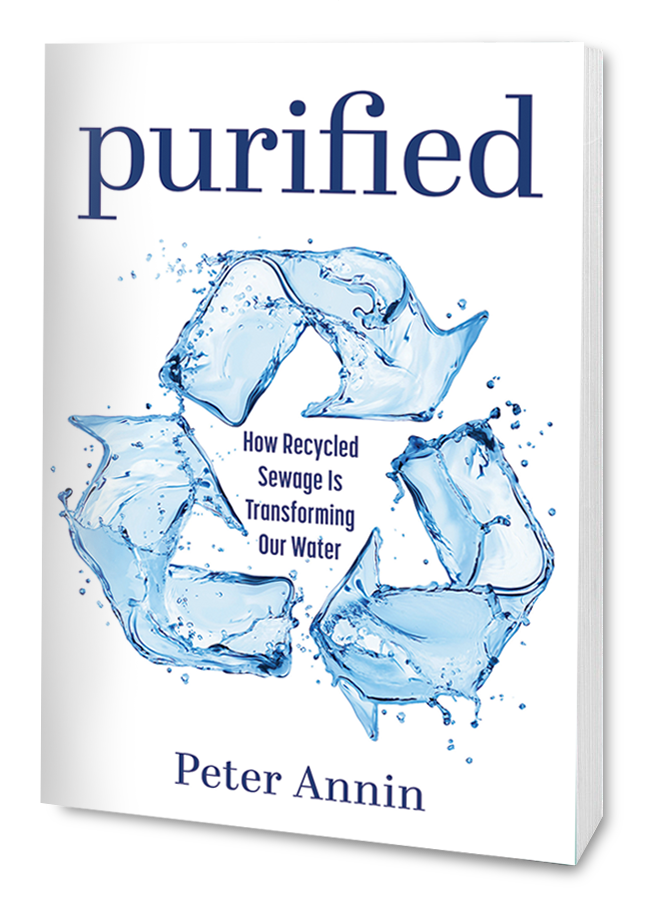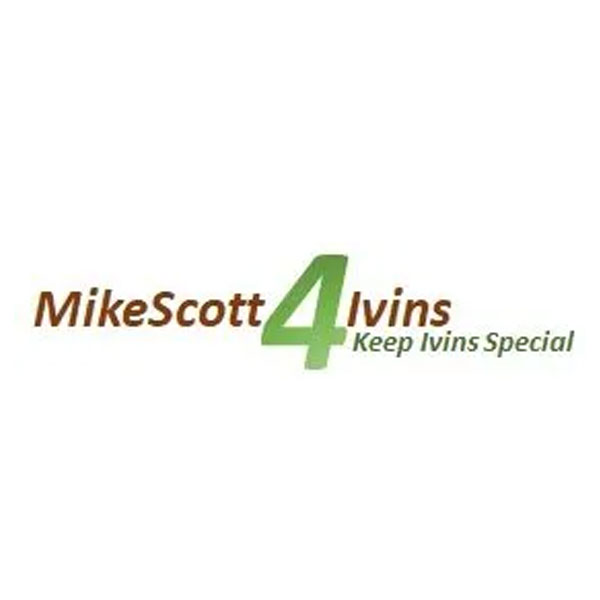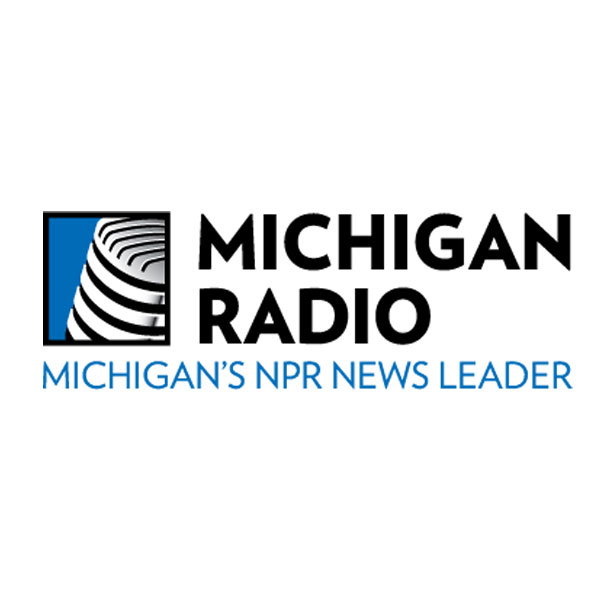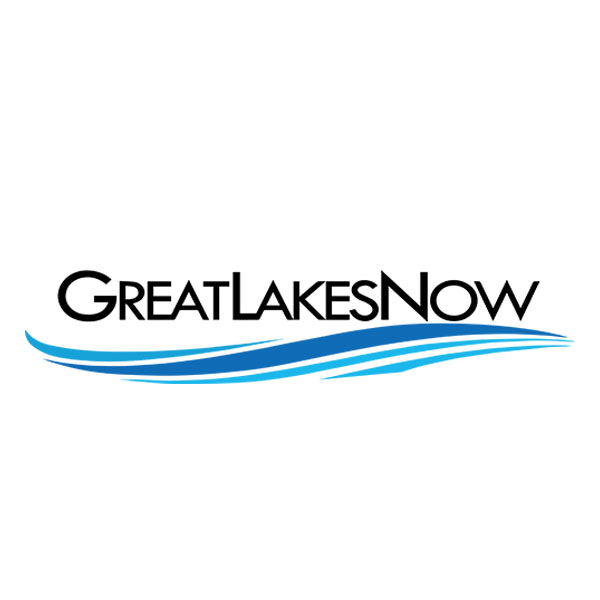purified in the news

purified
How Recycled Sewage Is Transforming Our Water
Publication Date: November 9, 2023

Forget tariffs, Trump may be targeting the Great Lakes and Canada’s freshwater next
March 11, 2025 | Financial Post

This southern Utah county plans to turn wastewater into drinking water
February 27, 2025 | The Salt Lake Tribune

Down the Drain or Back Again? The Future of Wastewater
February 14, 2025 | Mike Scott 4 Ivins

Recycling sewage is a sensible way to improve water security – but would you swallow it?
December 4, 2024 | The Conversation

Recycled sewage, public health and the memory of the world: Books in brief
May 17, 2024 | Nature

Water recycling goes mainstream
January 4, 2024 | Science

Recycled Sewage Water — Overcoming the ‘Yuck Factor’
January 3, 2024 | Society of Environmental Journalists

Book explores efforts to recycle sewage as a tool to help with water shortages
December 11, 2023 | Michigan Radio

Wisconsin’s Peter Annin sheds light on embracing purified sewage as clean, sustainable drinking water source
December 4, 2023 | Wisconsin Public Radio

REVIEW: Wisconsin author touches third rail of drinking water issues in new book
December 2, 2023 | Great Lakes Now

REVIEW: Purified: How Recycled Sewage Is Transforming Our Water
November 1, 2023 | Library Journal (starred review)
Author Q & A
In Purified, you write that many communities in the US are running out of freshwater options, even in areas with plenty of rainfall. Why is recycled water a sustainable, practical solution to the freshwater crisis?
By definition, recycling is sustainable, whether that be with aluminum, glass, paper … or water. By recycling water, we don’t need to pull new water from the ground, or from lakes and rivers. While it is not cheap, water recycling is cheaper—and more sustainable—than desalinating ocean water, and in particular, it is more sustainable than piping water long distances from somewhere else. Most importantly to water-stressed areas, recycled water is a local, drought-resistant supply. No matter how dry the weather is, there will always be sewage to recycle—over and over again.
Why aren’t efforts to recycle water being pursued more widely as a viable solution to water shortages?
Because of what is widely referred to as the “yuck factor.” Many people just don’t like the idea that their drinking water is sourced from sewage, even though the vast majority of the time, recycled water is cleaner than their current raw water source. But with the ongoing water crisis, more and more people are finding a way to put mind over matter. When communities are running out of water options, it is more difficult to be picky about alternative supply sources.
What is purified sewage? Is it really safe to drink?
Purified sewage is wastewater effluent that is run through a battery of high-tech water treatment processes after it leaves a sewage treatment plant. Those processes include microfiltration, which screens out microscopic viruses like giardia and cryptosporidium. In the next step, the water is treated with reverse osmosis or granular activated carbon, which removes trace pharmaceuticals, PFAS, and other chemical contaminants. At this point, the water is already purified, but just to be safe, it is treated with hydrogen peroxide and zapped again by ultraviolet light, which purifies it further, resulting in something akin to distilled water, which means it is definitely safe to drink. But from there, in yet another step, it is usually buffered by blending it with groundwater, or reservoir water, before it is treated one more time on its way to people’s homes. Not only is this water safe to drink, but millions of people in places like Orange County, California; El Paso, Texas; and Fairfax County, Virginia have been drinking it for years. Orbiting astronauts have been drinking it for years too. And thanks to billions of dollars in capital investment, water recycling is booming, which means that millions more people throughout the Sunbelt will soon be drinking it as well.
What are the advantages and disadvantages of recycled water versus groundwater or desalination?
Groundwater is generally one of the best water sources a community can have—until it runs out—and many areas are bumping up against the limits of available groundwater supplies. The same can be said for many surface water supplies as well. That means for many communities, there are only two realistic options left for new water supplies: the ocean and the toilet. Desalinated ocean water is more expensive (because it is so energy intensive) and creates more environmental concerns than water recycling, which is why an increasing number of communities are investing in water recycling, including those on the ocean. For those water-stressed communities that are not on the ocean, water recycling may be the only option they have left.
What are the main challenges to using purified sewage as a water source?
The main challenge is getting over the “yuck factor.” The second challenge is cost, as water recycling is generally more expensive than local groundwater and surface water options. But there are often federal and state programs that can help subsidize investments in water recycling facilities.
What is driving the expansion of recycled water across the country?
The key drivers are climate-driven drought and water scarcity. As I mentioned above, an increasing number of communities are running out of water supply options, especially in the Southwest, Texas, and Florida. But there are also a few longstanding examples of highly successful water recycling programs that have helped build confidence in water recycling as a safe and viable drinking water supply. That confidence is fueling the boom as well. Those water recycling success stories include Orange County, California; El Paso, Texas; and Fairfax County, Virginia. People in these communities have been drinking recycled water for years without incident. That is helping water officials in other areas convince local politicians and the general public that recycled water is a safe, viable drought-resistant water supply alternative.
How would you respond to someone who says, “I’ll never drink purified sewage”?
If they live in a river community, my response would be that they already are. Most of us are downstream from someone else, which means that communities upstream are discharging their treated effluent into the river that is the source of our drinking water. This is known as “de facto” water recycling. It’s happening already and has been for years. But if they don’t live on a river, I would remind them that all water on earth is recycled. The planet is graced with a finite supply that keeps circulating through the water cycle. As one source in my book put it, “We are drinking dinosaur pee now.” The water recycling industry is just expediting that natural cycle with cutting-edge technology.
Why did you decide to write Purified?
Because millions of people are being asked to drink purified sewage and they do not have a credible, nonpartisan, easy-to-read source that can tell them why this is happening, why it is important, and that it is safe. Recycled water is so heavily treated that it is often cleaner than existing water supplies. Purified is not a technical book. It is a short, fast-paced read written for the average citizen. It is targeted at people who want to know why their local utility is asking them to drink purified sewage and whether it is safe to serve to their children at the kitchen table. The answer is definitely ‘yes.’

